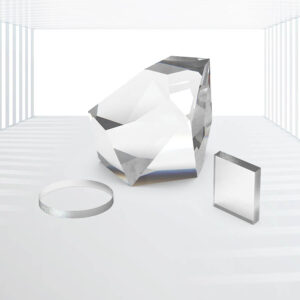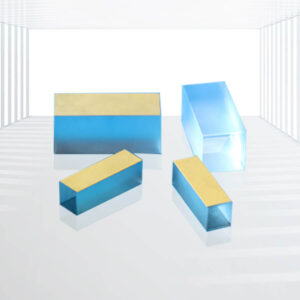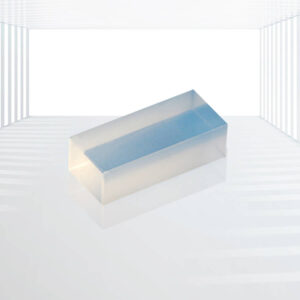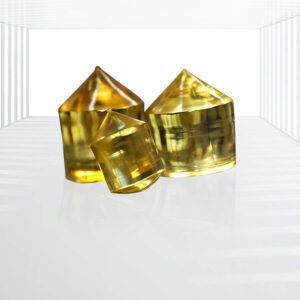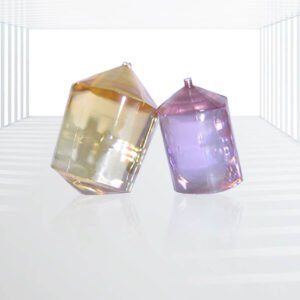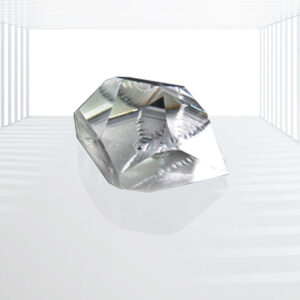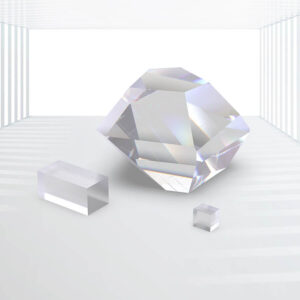Nd:YAG Crystal
Main Advantages: High Efficiency, Mechanical Robustness, Versatile Wavelength, Long Lifetime, Q-Switching Capability, Single-mode and Multi-mode Operation, Excellent Beam Quality
Application: Industrial Cutting and Welding Medical Lasers Scientific Research Laser Pumping Laser Marking and Engraving Laser Range Finding and LIDAR Entertainment and Display Defense and Security
Nd:YAG crystal, short for Neodymium-doped Yttrium Aluminum Garnet crystal, is widely recognized as one of the most commonly used solid-state laser materials. It finds extensive applications across industrial, medical, military, and scientific fields due to its exceptional performance and versatility.
Main Advvantages:
High Efficiency: Nd:YAG crystals have high efficiency in converting electrical energy into laser light, making them effective for producing high-power output.
Mechanical Robustness: They are mechanically robust and can withstand thermal and mechanical shocks, making them suitable for industrial and medical laser applications.
Versatile Wavelength: Nd:YAG lasers emit light at 1064 nanometers, which is a wavelength commonly used in industrial and medical applications due to its interaction properties with materials and tissues.
Long Lifetime: Nd:YAG crystals have a long operational lifetime, requiring minimal maintenance and providing stable performance over extended periods.
Q-Switching Capability: They can easily be operated in Q-switched mode, enabling the generation of high-energy pulses used in applications such as laser marking, engraving, and rangefinding.
Single-mode and Multi-mode Operation: Nd:YAG lasers can be configured for single-mode or multi-mode operation depending on the application requirements, offering flexibility in laser beam characteristics.
Excellent Beam Quality: They typically have good beam quality, which is crucial for applications requiring precise focusing and high spatial resolution.
Applications:
Industrial Cutting and Welding: Nd:YAG lasers are commonly used for precision cutting, welding, and drilling of metals and other materials in industries such as automotive, aerospace, and electronics manufacturing. Their high power and excellent beam quality enable precise and efficient material processing.
Medical Lasers: In medicine, Nd:YAG lasers are employed for various procedures including dermatology (skin treatments like hair removal and tattoo removal), ophthalmology (laser eye surgery), and dentistry (soft tissue surgery and dental treatments). Their ability to penetrate tissue and coagulate blood vessels with minimal damage to surrounding areas makes them valuable in surgical applications.
Scientific Research: Nd:YAG lasers are widely used in research laboratories for spectroscopy, microscopy, and laser-induced breakdown spectroscopy (LIBS). They facilitate precise analysis of chemical compositions, study of molecular structures, and investigation of materials under extreme conditions.
Laser Pumping: Nd:YAGcrystals serve as effective pump sources for other laser materials such as erbium-doped fiber amplifiers (EDFAs) and solid-state lasers. They are crucial in telecommunications for amplifying optical signals in fiber-optic networks and in scientific instruments for generating high-energy pulses.
Laser Marking and Engraving: Nd:YAG lasers are utilized for high-precision marking, engraving, and etching on a variety of materials including metals, plastics, and ceramics. Their ability to produce fine details and durable markings makes them ideal for branding, labeling, and decorative applications.
Laser Range Finding and LIDAR: Nd:YAGlasers are used in military and aerospace applications for laser range finding, target designation, and LIDAR (Light Detection and Ranging) systems. Their ability to emit short, powerful pulses with precise timing enables accurate distance measurement and mapping of terrain and objects.
Entertainment and Display: Nd:YAGlasers are employed in entertainment industries for laser light shows, laser projectors, and special effects in concerts, events, and theme parks. Their ability to create vibrant colors and dynamic visual effects enhances the entertainment experience.
Defense and Security: Nd:YAG lasers find applications in defense and security sectors for laser weapons, directed energy systems, and countermeasure technologies. Their high-power output and ability to operate in harsh environments make them valuable for military applications.
Specifications
| Laser Transition | 4F3/2 → 4I11/2 |
| Laser Wavelength | 1064nm |
| Photon Energy | 1.86×10-19J@1064nm |
| Emission Linewidth | 4.5 Å@1064nm |
| Emission Cross Section Nd1at%) | 2.7~8.8×10-19cm2 |
| Fluorescence Lifetime (Nd1at%) | 230μs |
| Diode Pump Band | 807.5nm |
| Width of Pump Bands | 1nm |
| Major Pump Bands | 400~850nm |
| Index of Refraction | 1.8197@1064nm |
| Crystal Structure | Cubic |
| Lattice Parameters | 12.01Å |
| Melting Point | 1970℃ |
| Moh Hardness | 8.5 |
| Density | 4.56±0.04g/cm3 |
| Specific Heat (0-20) | 0.59J/g.cm3 |
| Modulus of Elasticity | 310GPa |
| Young’s Modulus | 3.17×104Kg/mm2 |
| Poisson Ratio | 0.3(est.) |
| Tensile Strength | 0.13~0.26GPa |
| Thermal Expansion Coefficient | [100]Direction:8.2×10-6/K(0~250℃ ) |
| [110]Direction:7.7×10-6/K(0~250℃ ) | |
| [111]Direction:7.8×10-6/K(0~250℃ ) | |
| Thermal Conductivity | 14W/m/K(@20℃ ) |
| 10.5W/m/K(@100℃ ) | |
| Thermal Optical Coefficient (dn/dT) | 7.3×10-6/K |
| Thermal Shock Resistance | 790W/m |
| Solubility | Water: Insoluble; Common Acids: Slightly |





